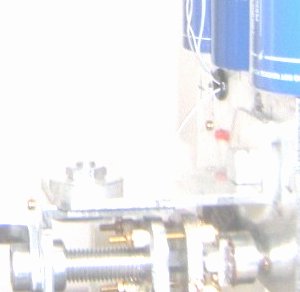High-capacity unit

|
Non-reactive drive module

|
Popularizationof our experiments and knowledge.
Videos and demonstration aids from some of our experiments.- Video for report pointing out a theoretical error in electrodynamics: here. - Video for the report under preparation, which also proves a theoretical error in electrodynamics from another viewpoint than the previous demonstration. Video is under preparation here. |
Summary of findings for monograph
We are preparing a monograph named „Extra-terrestrial electrodynamics“ The monograph will include both practical and theoretical description of the basics of hitherto unknown physical principles, which have been successfully disguised by the mathematically well-elaborated Maxwell's theory over several centuries. The publication will be based on physical data with detailed descriptions of experiments including an explanation, where and why there were erroneous assumptions incorporated in the current view of electrodynamics.
|
Programme
News
5 4 3 2 1We are working on the publication of an experimental and mathematical demonstration of how a defined constant can make false theoretical conclusions in electrodynamics quite plausible, underpinning them with relatively large set of experimental data. An analysis will be published, showing why Sir James Clerk Maxwell made a physical mistake when he was trying to create a simple, generally applicable mathematical description of electrodynamics. Among other topics, the paper will reveal the “physical trickster” hidden in Faraday's generator, which leads to the false impression that the Lorentz force is a product of the movement of a conductor in a radially homogeneous field.
You can learn much more in the experimental lectures in our offering.
The main driver for the verification of Maxwell equations consisted in the doubts that the electrical intensity generated in a large enclosed conductive loop could “be interested” in a change of homogeneous induction flux somewhere in the centre of the area enclosed by that loop. We see it as physically doubtable that the movement of a conductor in this homogeneous field represents an equivalent result and that this mathematical conformity (Stokes’ theorem) represents a general physical law.
You can learn more in the fifth paragraph in the “Motivation” section.
At the academic lectures held within the basic physics programme, you will learn that in a conductor, which is in uniform linear motion, a DC voltage is induced (Faraday's generator is considered as evidence).
This would mean, indeed, that such a conductor could perform labour without slowing down its motion if we were able to utilize this voltage. In Maxwell's equations, electrically neutral conductor is handled in the same manner as it was made of a glass tube filled with electrons (Biot-Savart-Laplace law). The emergence of electrical intensity in an electrically neutral conductor is thus explained in a manner based on the description of the motion of a separate electron without considering the external environment of the conductor.
Within our research, we have come to the conclusion that there is an apparent experimental coincidence, which is only caused by the methodology of definition of physical constants, which includes certain physically incorrect aspects. We have proven that what applies to separate electron does not apply equivalently for electrons inside a conductor, which is masking their charge.
Why are we interested in the interaction between the surrounding magnetic field and conductor and not in the changes in the induction flux?
You can find the experimental proof that the academic notion is not based on actual data as well as the answer to the previous question in the “Demonstration” in the second paragraph.

